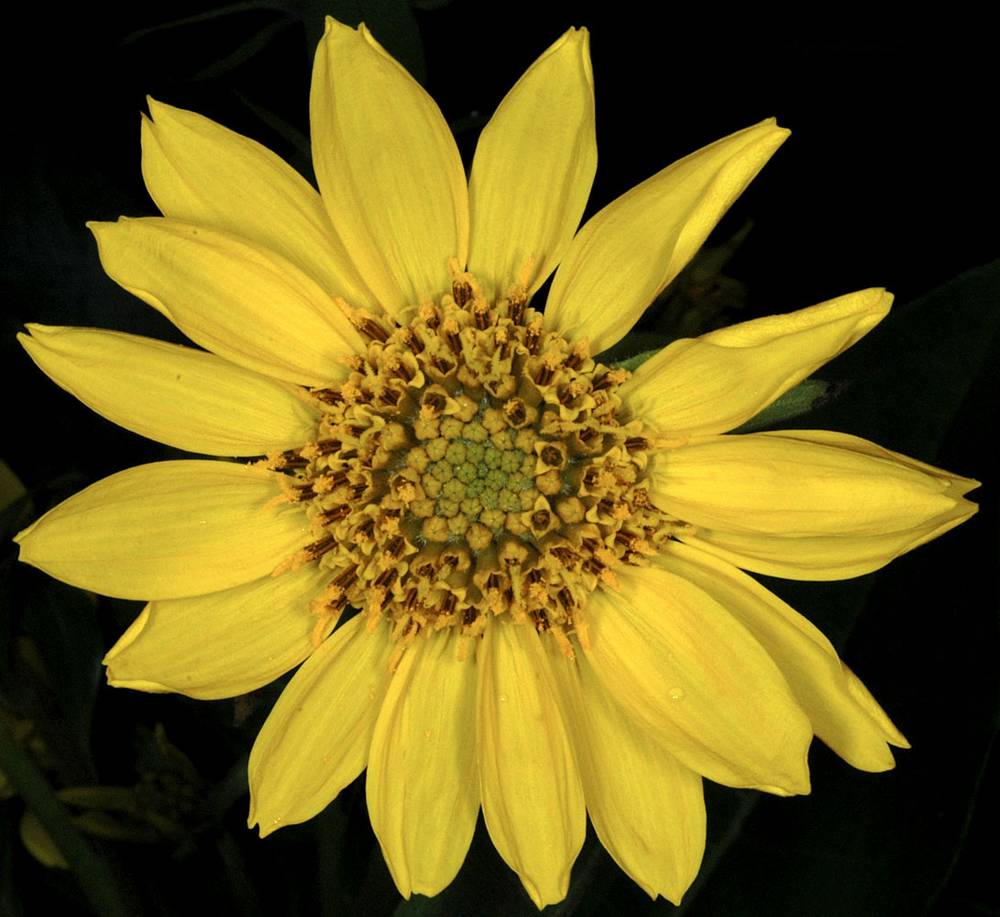Balsamorhiza deltoidea
deltoid balsamroot
forming clumps, 14–54 cm, green, villous-hirsute, with shorter, glandular hairs.
simple;
margins entire to toothed;
teeth rounded and apiculate;
surfaces abaxially sparsely hirsute, adaxially sparsely hirsute, villous-hirsute on veins;
basal leaves in multiple rosettes;
blades deltate, 7.5–27 × 6–16 cm, bases cordate or hastate;
petioles 10–27 cm;
cauline blades 3–7.5 × 1.1–2.7 cm;
petioles 0–8.5 cm.
with 1 larger; terminal head and 0–2 smaller; axillary heads;
peduncles 1–12 cm.
terminal 10–15 × 20–33 mm; axillary 8–10 × 11–17 mm.
deciduous, 11–21 on large heads, 6–9 on small heads, yellow;
rays 18–35 × 4–17 mm.
5–8 mm.
ovate, 10–32 × 4–9 mm, villous; more densely so at bases; outer phyllaries often lanceolate; longer than inner.
9 × 1.5 mm, glabrous.
~7 mm.
=38.
Balsamorhiza deltoidea
Grasslands, pine or oak woodlands. Flowering Mar–Jul. 50–2200 m. Casc, ECas, Sisk, WV. CA, WA; north to British Columbia. Native.
Balsamorhiza deltoidea grows west of the Cascade Range and intergrades with B. careyana in the Cascades and along the Columbia River. (See discussion under B. careyana.) It also hybridizes with B. sericea in Josephine County. Hybrids between Balsamorhiza deltoidea and B. hookeri have been given the name B. × terebinthacea but are not expected to be found in Oregon, given that the ranges of the parental species do not overlap here. The specific epithet refers to the deltoid shape of the leaves.
Abigail (Abby) Moore
- Local floras:
BC,
CA,
OR,
WA
- Local Web sites:
CalFlora,
CalPhotos,
Flora NW,
PNW Herbaria,
Turner Photog.
WildflowerSearch
iNaturalist (observations)
USDA Plants Database
- LBJ Wildflower Center
- SEINet
- Plants of the World Online
- Encyclopedia of Life
- Wikipedia
- Google Image Search



